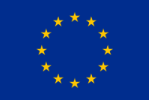Training of innovative models and methods in youth work” supported by the EU programme Erasmus+.
In 2022, Eurodiaconia developed a funding toolkit for members as a guide to all things European funding
A practical guide to improving quality in long-term care in Europe with a special focus on older people
Eurodiaconia is a network of churches and Christian organisations that provide social and health care services and advocate for social justice. Together we work for just and transformative social change across Europe.
Copyright 2025 © All Rights Reserved

Funded by the European Commission under the ESF+ programme 2022 – 2025. The Information contained in this document does not necessarily reflect the position or opinion of the European Commission. Copyright 2025 Eurodiaconia All rights reserved.